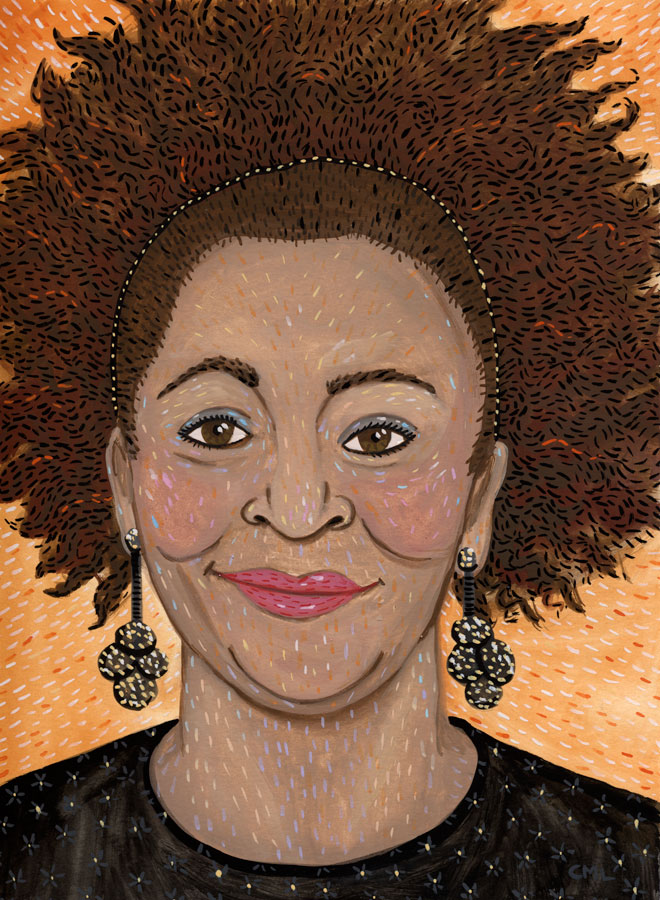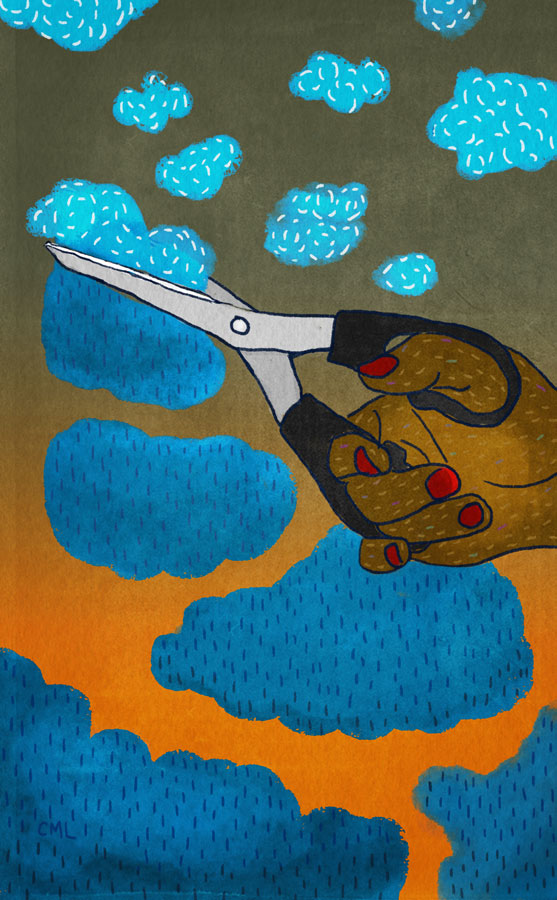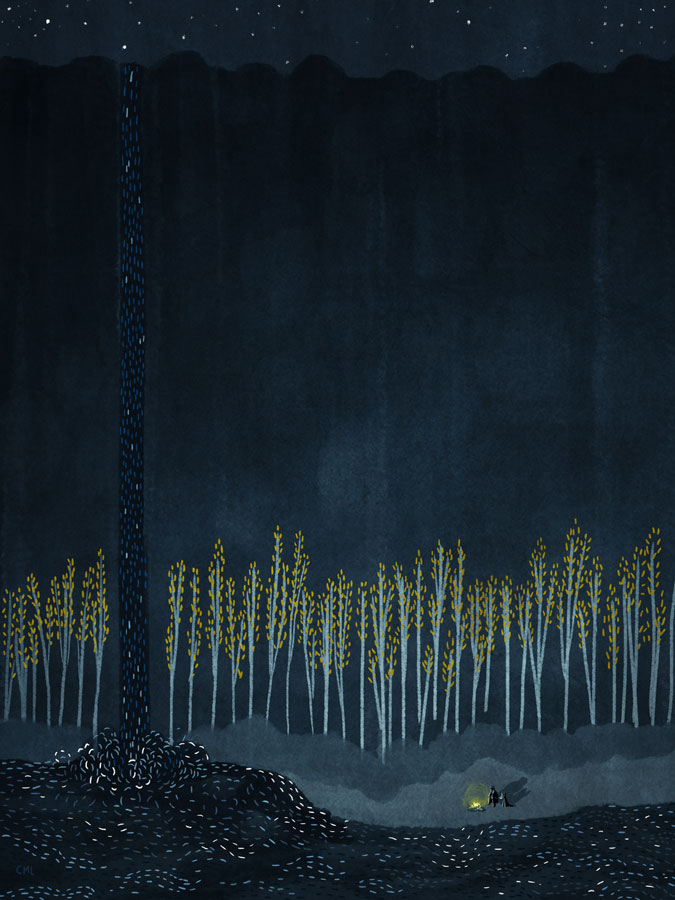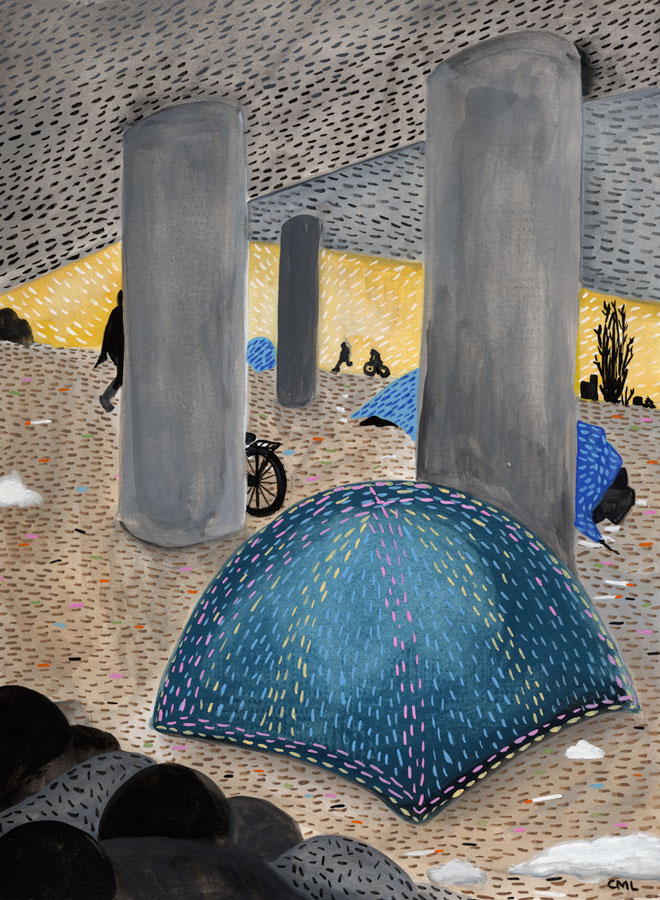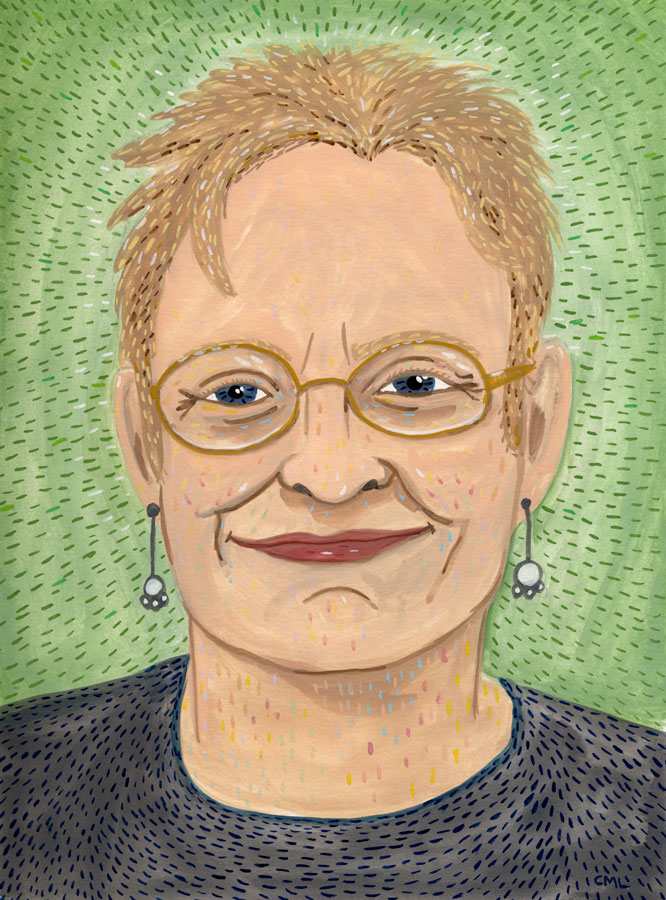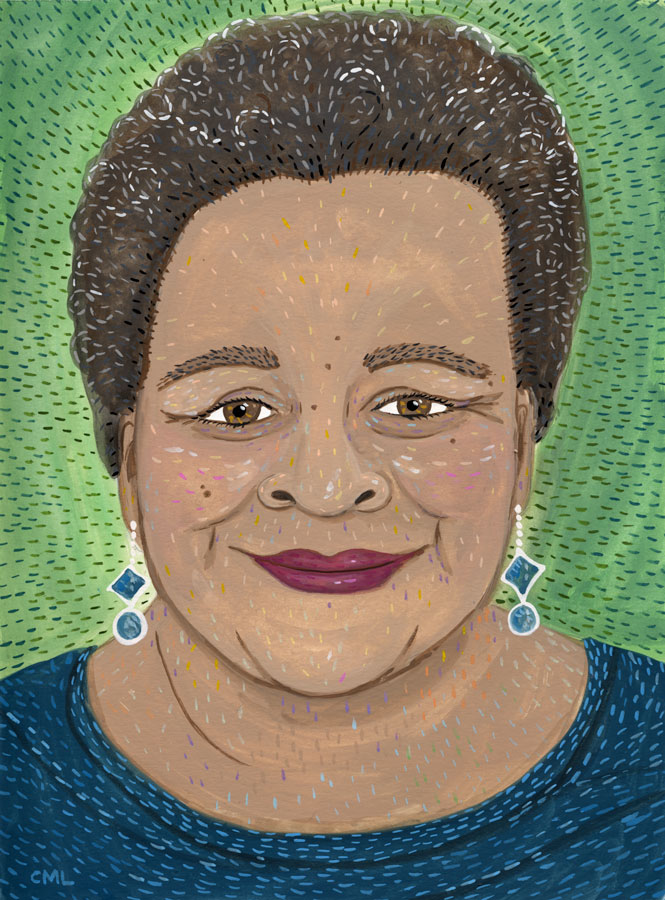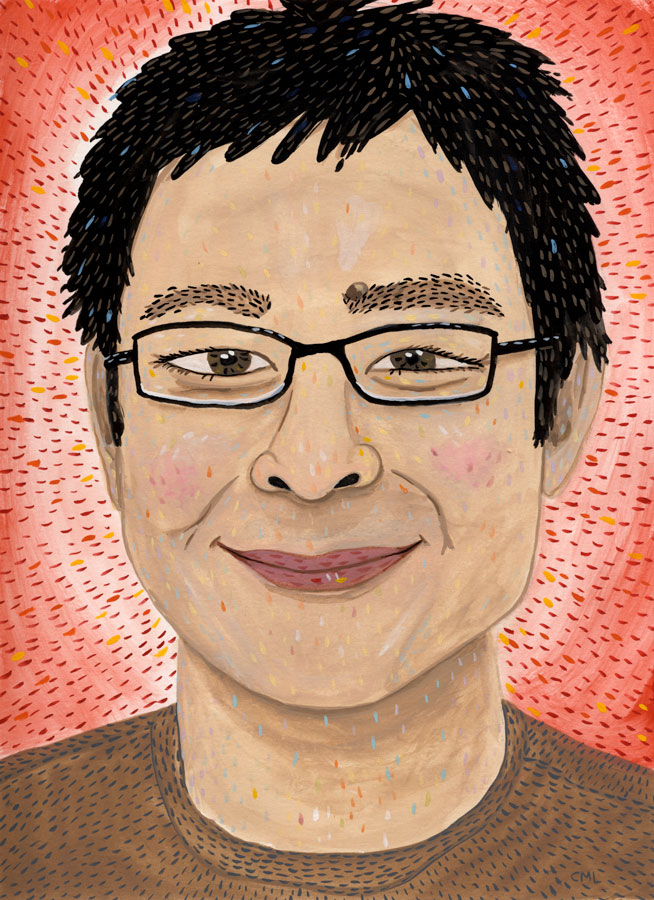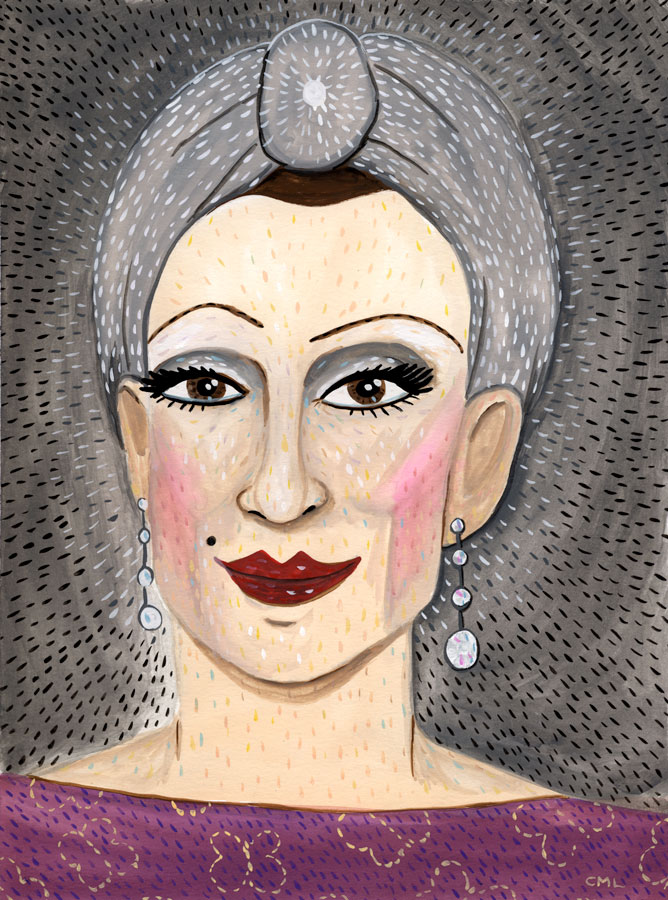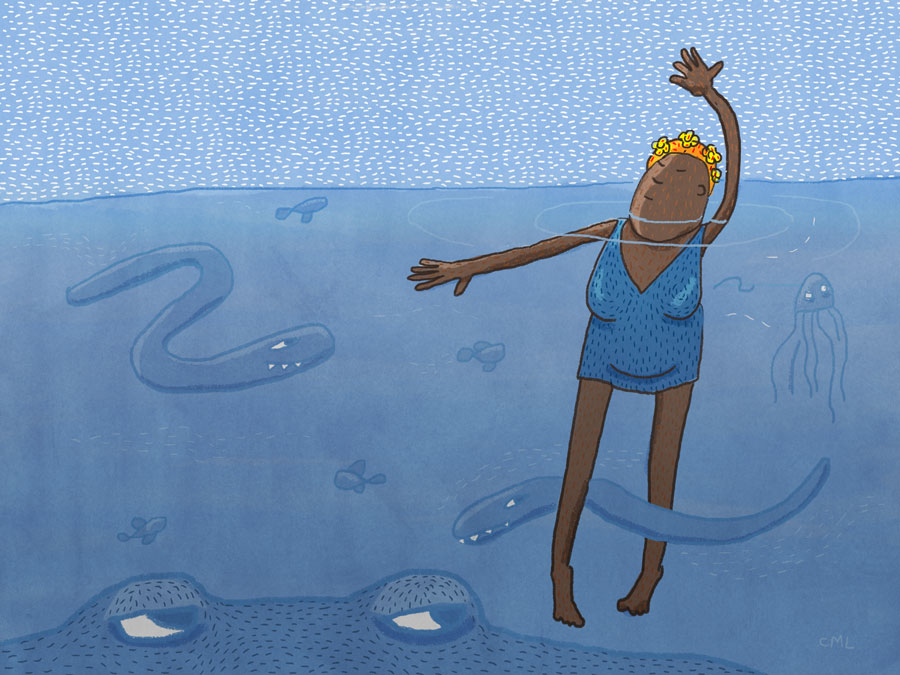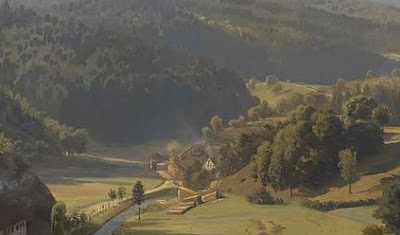At the end of August, I began to make regular sketches of a character I’d thought of long ago. Slappy the Squirrel was first conceived of maybe 5 years ago amongst a whirlwind of story ideas I was dreaming up. Recently Slappy popped up again during the SCBWI’s LA conference Illustrators Intensive. After graduating in July, […]
via Studio Bowes Art Blog at http://ift.tt/2c5ghxW
Viewing: Blog Posts Tagged with: Color, Most Recent at Top [Help]
Results 1 - 25 of 510
Blog: Studio Bowes Art (Login to Add to MyJacketFlap)
JacketFlap tags: Characters, Color, sketch, Sketchbook, Sketchblog, slappy, Add a tag
Blog: Studio Bowes Art (Login to Add to MyJacketFlap)
JacketFlap tags: Characters, Color, sketch, Sketchbook, Sketchblog, slappy, Add a tag

Blog: Christine Marie Larsen Sketchbook (Login to Add to MyJacketFlap)
JacketFlap tags: commissioned, SRoB, science, portraits, people, color, writers, editorial, faces, Add a tag
Blog: Christine Marie Larsen Sketchbook (Login to Add to MyJacketFlap)
JacketFlap tags: SRoB, portraits, people, color, writers, editorial, commissioned, Add a tag
Blog: Christine Marie Larsen Sketchbook (Login to Add to MyJacketFlap)
JacketFlap tags: portraits, color, writers, exhibits, SRoB, Add a tag
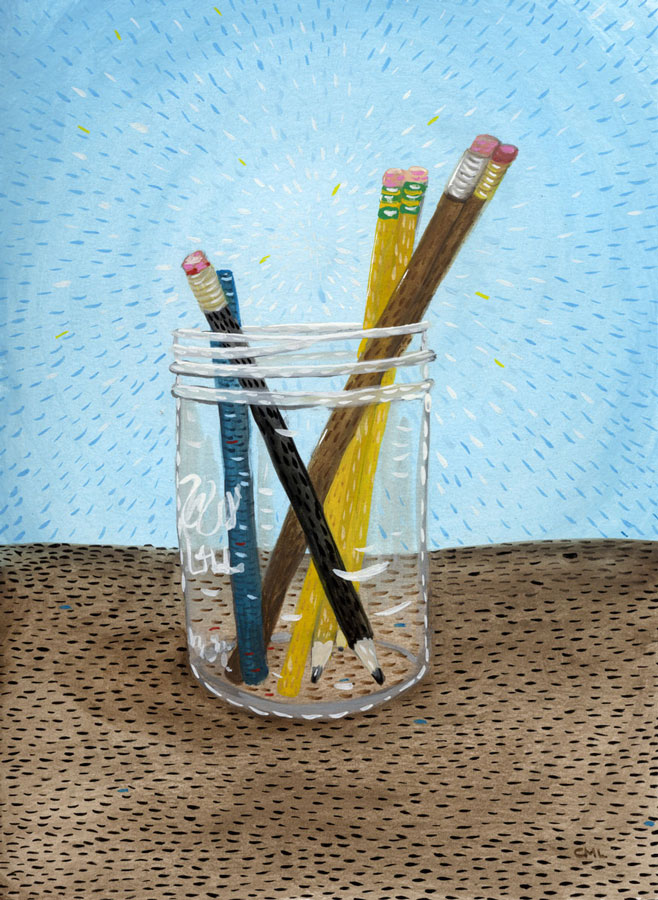
Come see this painting at the "Writers" show at Essentia in Belltown.
Opening Friday 6/10/16 6-9pm.
Join us for art, snacks, and readings by Sarah Galvin, Lesley Hazleton, and Maged Zaher
Push/Pull & Seattle Review of Books present
Writers:
A selection of portraits painted for the Seattle Review of Books of local and national authors, plus paintings of the objects of a writer's life.
Christine Marie Larsen is a Seattle illustrator. Her work has appeared in The New York Times, Travel & Leisure, The Stranger, and more. Her illustrations explore the serious and sill aspects of this life on earth.
Artist Reception will include readings from Lesley Hazleton, Maged Zaher, and Sarah Galvin.
Come join us for an evening of local authors and art. We also have a Little Free Library to browse and borrow from. Refreshements will be provided.
This show is made possible through The Betterhood at Essentia World's Only Natural Memory Foam.
Essentia Mattress Store - Seattle
2008 1st Ave, Seattle, Washington 98121
Add a Comment
Blog: Christine Marie Larsen Sketchbook (Login to Add to MyJacketFlap)
JacketFlap tags: editorial, faces, commissioned, SRoB, portraits, people, color, writers, Add a tag
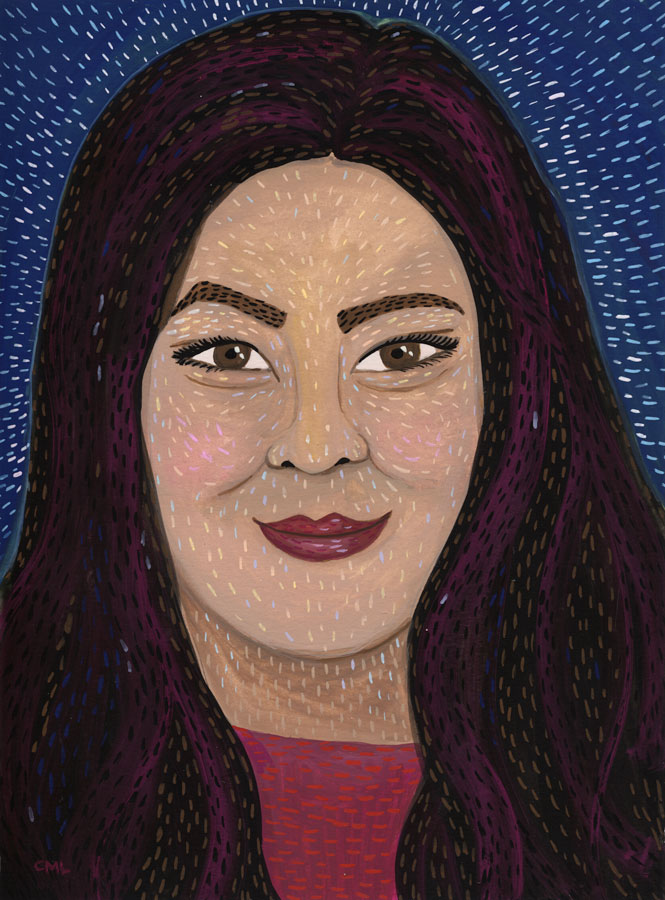
A SRoB portrait of TIME magazine correspondent Jay Newton-Small, author of Broad Influence: How Women Are Changing the Way America Works.
Add a Comment
Blog: Christine Marie Larsen Sketchbook (Login to Add to MyJacketFlap)
JacketFlap tags: portraits, people, color, writers, editorial, faces, commissioned, SRoB, Add a tag
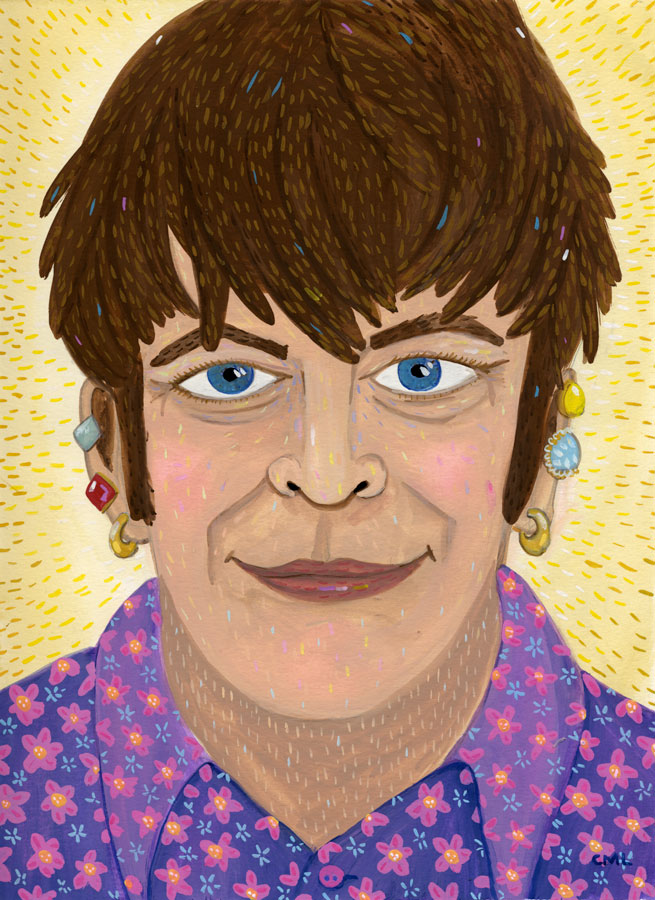
Author and activist Mattilda Bernstein Sycamore for the Seattle Review of Books Portrait Gallery
Add a CommentBlog: Christine Marie Larsen Sketchbook (Login to Add to MyJacketFlap)
JacketFlap tags: SRoB, portraits, people, color, writers, editorial, faces, commissioned, Add a tag
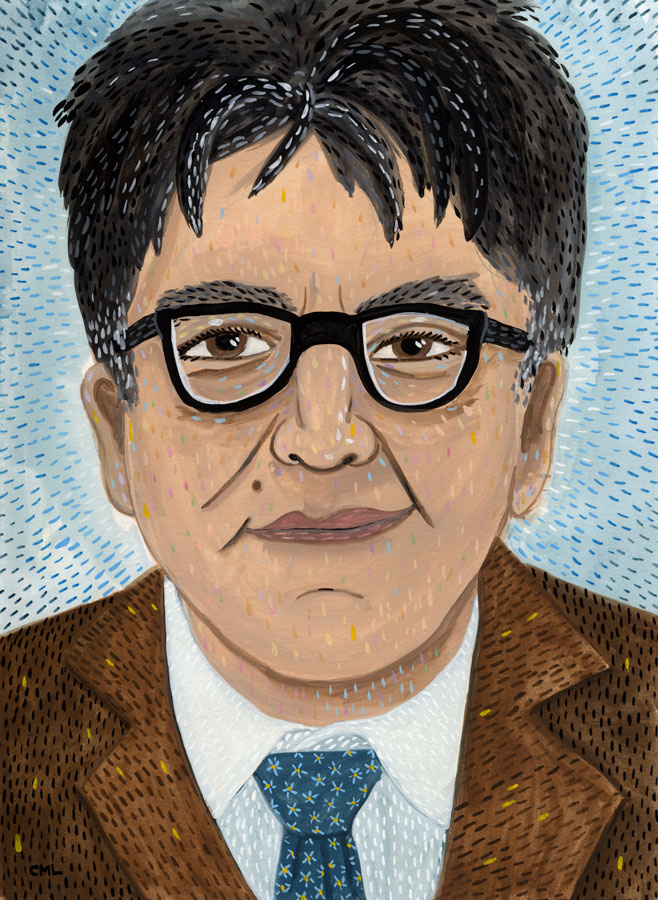
Here's a gouache on paper illustration of author and poet Sherman Alexie for the Seattle Review of Books Portrait Gallery
Add a CommentBlog: Studio Bowes Art (Login to Add to MyJacketFlap)
JacketFlap tags: children's books, fun, fantasy, Characters, Color, sketch, Watercolor, Children's Book, Brian Bowes, Add a tag

Blog: Studio Bowes Art (Login to Add to MyJacketFlap)
JacketFlap tags: children's books, fun, fantasy, Characters, Color, Workshops, sketch, Watercolor, Children's Book, Brian Bowes, Add a tag
Over the last few months I have been listening to the unabridged Blackstone Audio of Moby Dick. Along the way the story has seeped into my thoughts and drawings. I present to you some work that I made along the way. As it turns out, I am a little obsessed with illustrating stories. Hmm, perhaps there a […]
via Studio Bowes Art Blog at http://ift.tt/1rLX8sv
Blog: Christine Marie Larsen Sketchbook (Login to Add to MyJacketFlap)
JacketFlap tags: science, color, digital, editorial, Add a tag
Blog: Christine Marie Larsen Sketchbook (Login to Add to MyJacketFlap)
JacketFlap tags: color, digital, editorial, Add a tag
Blog: Christine Marie Larsen Sketchbook (Login to Add to MyJacketFlap)
JacketFlap tags: color, editorial, Add a tag
Blog: Christine Marie Larsen Sketchbook (Login to Add to MyJacketFlap)
JacketFlap tags: SRoB, portraits, people, color, writers, editorial, faces, commissioned, Add a tag
Blog: Christine Marie Larsen Sketchbook (Login to Add to MyJacketFlap)
JacketFlap tags: portraits, people, color, writers, editorial, commissioned, SRoB, Add a tag
Blog: Christine Marie Larsen Sketchbook (Login to Add to MyJacketFlap)
JacketFlap tags: editorial, faces, commissioned, SRoB, portraits, people, color, Add a tag
Blog: Gurney Journey (Login to Add to MyJacketFlap)
JacketFlap tags: Color, Add a tag
 Welcome to the GJ Book Club. Today we'll cover pages 192-216 of the chapter on "Tone and Colour Design," from Harold Speed's 1924 art instruction book Oil Painting Techniques and Materials
Welcome to the GJ Book Club. Today we'll cover pages 192-216 of the chapter on "Tone and Colour Design," from Harold Speed's 1924 art instruction book Oil Painting Techniques and Materials.
I'll present Speed's main points in boldface type either verbatim or paraphrased, followed by my comments. If you want to add a comment, please use the numbered points to refer to the relevant section of the chapter.
 |
| Veronese—Allegory of Love: Infidelity |
| Seago --Thames Embankment |
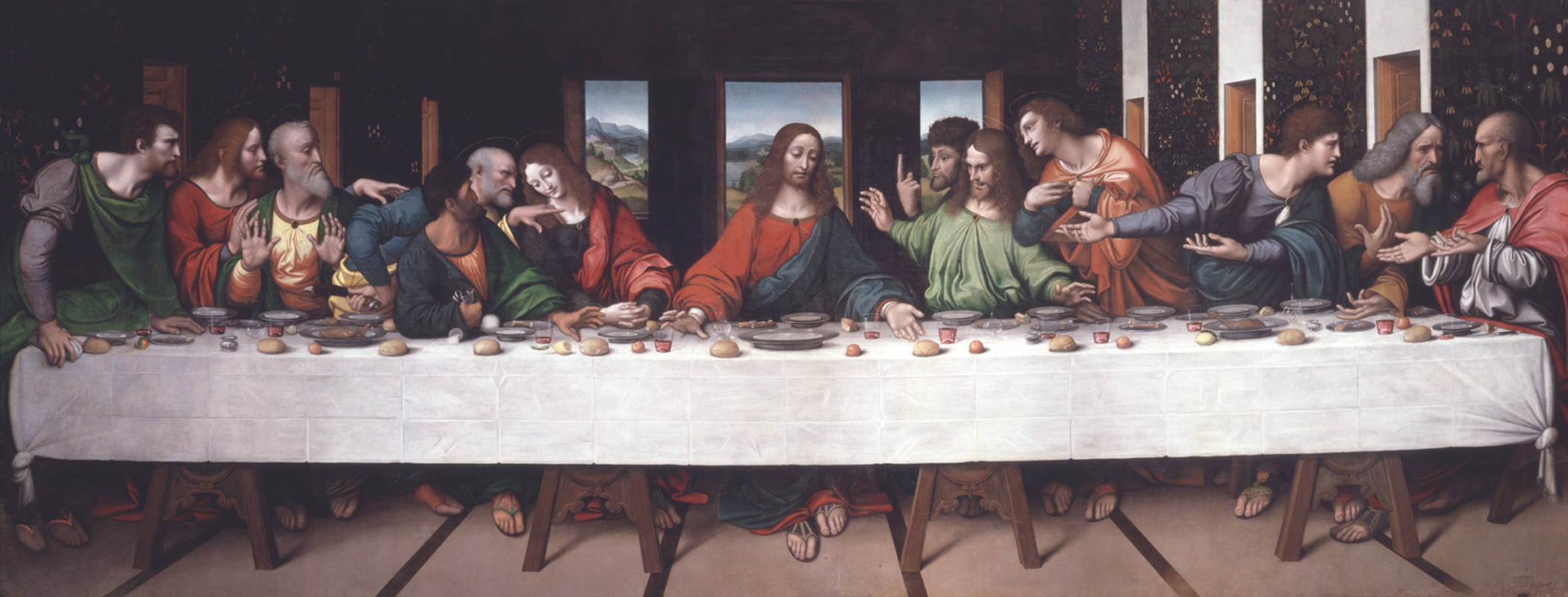 |
| Giampietrino Last Supper ca. 1520 after Leonardo |
Kind of like shape welding using color temperature instead of value.
 |
| Harold Speed -- The Alcantara, Toledo |
 |
| Sargent Wyndham sisters. |
However, the Internet has fostered the growth of a citizen band of book critics, movie commentators, and teachers of form and style. And the Internet has also introduced crowd-sourcing as a new model of funding and distribution. This crowd-sourced check-valve on the arts has changed how and why creators do what they do. I wonder what Speed would have thought of it.
Speed says, "The mind only opens to the reception of ideas and experiences that are beyond one's present capacity." He says that art takes patience and reverence to really appreciate. He tells the story of the young museum-goer asking him to explain the merits of an old master to him. Speed advocates spending time with older painters and "getting past the brown varnish" to understand its retiring qualities.
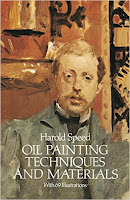 Next week—We'll continue with Materials on page 217.
Next week—We'll continue with Materials on page 217.GurneyJourney YouTube channel
My Public Facebook page
GurneyJourney on Pinterest
JamesGurneyArt on Instagram
@GurneyJourney on Twitter
Blog: Gurney Journey (Login to Add to MyJacketFlap)
JacketFlap tags: Color, Lighting, Visual Perception, Add a tag
Whether you call it lens flare (what happens in a camera when you look at the sun) or color corona (a similar phenomenon that happens in your eye), it's a powerful effect that's popular in photography and video these days, but it's also something that has fascinated painters for a long time.
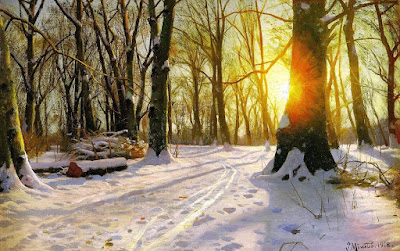 |
| Peder Mønsted, A Winter's Day |
The effect comes from light scattered by water vapor and dust in the air between you and the sun. The light is further scattered by your eyelashes when you squint, and then by the aqueous humor and vitreous fluid of the eye. The effect is best observed when you glimpse a setting sun through trees or when you see a streetlight at night.
Try squinting hard at a streetlight and tilting your head to see how the rays tilt with you. Also, try walking through the forest where the sun is mostly blocked by branches and glance up toward the sun as you walk to see how the corona comes and goes.
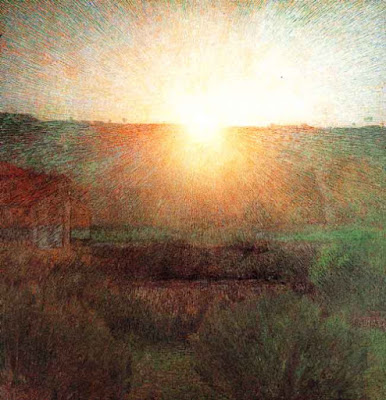 |
| Giuseppe Pellizza (Italian, 1868-1907) Volpedo, The Sun, 1904 |
Lens flare is easy for digital artists to add, and a little harder for physical painters, depending on the technique. As a photographic effect, it has origins in camera optics. Its artistic use—and overuse—in film, television, and photography is well explained in this Vox video (link to YouTube). Thanks, Dan.
--------
Related GurneyJourney posts:
Color Corona
How to Get a Feeling of Misty Light
Practical Lights
Light Spill
More of this kind of stuff in my book Color and Light: A Guide for the Realist Painter
Blog: Christine Marie Larsen Sketchbook (Login to Add to MyJacketFlap)
JacketFlap tags: music, portraits, people, color, editorial, faces, commissioned, SRoB, Add a tag
Blog: Illustration Friday Blog (Login to Add to MyJacketFlap)
JacketFlap tags: design, illustration, art, color, digital, artists, editorial, freelance, editorial submissions, Add a tag
Post by Chloe




Lotta Nieminen’s illustrations are packed with detail, colour and narrative. The bold vector shapes combined with subtle texture and an atmospheric colour-scheme is what really brings this work to life. Lotta Nieminen’s talent doesn’t stop at illustration either. She is also a graphic designer and art director who runs her own studio based in New York.
If you would like to see more of Lotta Nieminen’s work please visit her portfolio.
Blog: Christine Marie Larsen Sketchbook (Login to Add to MyJacketFlap)
JacketFlap tags: children's, people, color, digital, editorial, pen & ink, Add a tag
Blog: Gurney Journey (Login to Add to MyJacketFlap)
JacketFlap tags: Color, Academic Painters, Add a tag
 |
| Das Geroldsauer Tal bei Baden-Baden by Johann Wilhelm Schirmer (1807–1863) |
When painting landscapes in oil, it helps to mix batches of each of these value steps on the palette and make sure they progress evenly.
-----
There's also a double gradation going on in the sky. More on Sky Gradations on a previous GurneyJourney post
and more of this kind of stuff in my book Color and Light: A Guide for the Realist Painter
Blog: Gurney Journey (Login to Add to MyJacketFlap)
JacketFlap tags: Color, Add a tag
"The new pigment is formed by a unique crystal structure that allows the manganese ions to absorb red and green wavelengths of light, while only reflecting blue. The vibrant blue is so durable, and its compounds are so stable – even in oil and water – that the color does not fade. These characteristics make the new pigment versatile for a variety of commercial products."Read the rest
Blog: Gurney Journey (Login to Add to MyJacketFlap)
JacketFlap tags: Color, Add a tag
For centuries artists have explored ways to map the universe of color. Each kind of chart reflects a different conception of color. Here are a few examples, from a selection by The Public Domain Review
 |
| "A chart from 1746 by Jacques-Fabien Gautier illustrating his theory that the primary colours are black and white, with red, yellow, and blue being secondary. Colours were thought to be drawn out of the shadows by the presence of light – Source." |
 |
| "Philipp Otto Runge’s Farbenkugel (1810). The top two images show the surface of the sphere, while the bottom two show horizontal and vertical cross sections –Source." |
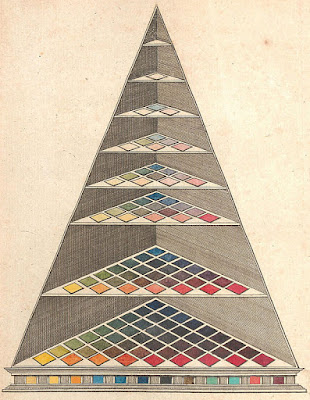 |
| "Johann Heinrich Lambert’s three-dimensional adaptation of Tobias Mayer’s triangle, featured in his Beschreibung einer mit dem Calauschen Wachse ausgemalten Farbenpyramide (1772) – Source." |
 |
| "Page from Priced catalogue of artists’ materials : supplies for oil painting, water color painting, china painting … and drawing materials for architects and engineers, manual training schools and colleges (1914) – Source." |
More about color systems in my book: Color and Light: A Guide for the Realist Painter
Blog: Illustration Friday Blog (Login to Add to MyJacketFlap)
JacketFlap tags: illustration, illustration friday, art, color, digital, artists, printmaking, editorial, texture, freelance, Add a tag






karolin schnoor is a German freelance Illustrator and designer, who uses screen printing as an integral part of her illustration practice. Inspired by a love of colour and pattern her illustrations can be found in magazines, stationary, calendars and mugs with a vast array of products to purchase in her Etsy shop. Some of her clients include; Harper Collins, Creative Review and The New York Times.
To see more from this artist visit her website.
View Next 25 Posts




